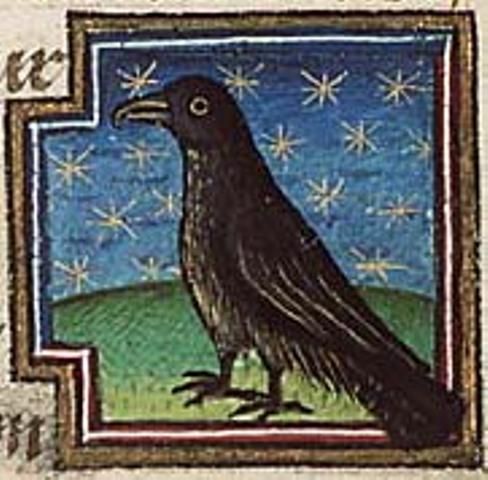















The Loathly Lady
She who is sovereignty, in more ways than one.
There are two strains of this tale, wherein a young knight marries an old hag, only to have her become beautiful: the elder features this in a tale about the sovereignty of the land, while the younger features this in a tale about the sovereignty of women.
The basics of the tale is this: A young knight is somehow threatened with death, either his own or that of someone close. His salvation can only be gained from an ugly old woman who often demands some sexual favor, whether it be a kiss or marriage, in exchange for that which will save his life. He reluctantly agrees, and is rewarded not only with his life, but with the hag, who changes into a beautiful woman.
In the older versions, usually found in Irish, the old woman represents the sovereignty of Ireland, and he who submits to her becomes the high king, and marries the sovereignty in a type of hierogamy. There is often a drink involved, which may be connected to the mead and horse cults, as alluded to in various texts, even as late as Gerald of Wales in the 12th century. Here, the sovereignty is a horse goddess who has a cup, often of mead, which she offers to the king; his accepting of the cup seals his kingship and their marriage.
"Flaith Érenn"--the Sovereignty of Ireland--is the woman who gives Conn the cup of sovereignty in Baile in Scáil. This episode is likely a reflex of the older ritual described by Michael Enright in Lady with a Mead Cup, wherein the woman acts as prophet and king-maker. In Enright's book, this function is identified with the continental goddess Rosmerta, consort of Mercury. In Ireland, Flaith Érenn is seen seated next to Lugh, who is usually identified with Mercury.
In later, usually English versions, the young knight must answer the question "What do women most desire?" The answer, he learns from the old hag, is sovereignty over herself. However, in gaining the answer, he is forced to marry the hag. She then offers him the choice--to have her be pretty and unfaithful, or old but a faithful wife. He wisely allows her to choose, thus demonstraiting the concept of soveriegnty; at this point, she declairs that she will be both beautiful and faithful.
It was evidently one of the most popular motifes in medieval Britain; according to Thomas Hahn:
The story also served for the plot of an interlude performed at one of Edward I's Round Tables in 1299: a loathly lady, with foot-long nose, donkey ears, neck sores, a gaping mouth, and blackened teeth, rode into the hall and demanded of Sir Perceval and Sir Gawain (Edward's knights had assumed Arthurian identities for the occasion) that they recover lost territory and end the strife between commons and lords. The author of the interlude evidently assumed that Edward's court would recognize the story in its outlines.
The mention here of Perceval is interesting, for in his own story there is also a Loathly Lady, though she does not become the Grail Knight's wife; instead, she is often the bearer of the Grail, as well as the chastizer of Perceval for losing his way in the quest. The relationship of the Grail Bearer and the Loathly Lady is strengthened when we examine the Irish text of Baile in Scáil, wherein Conn Céad Cathach is transported to the Otherworld by Lugh Lamhfada, and there is served by the Sovereignty of Ireland with a cup of mead representing the high kingship of Ireland; another example is the story of Niall and the well, recounted below.
There are at least three versions of this tale, not including the variations upon those three tales:
Finally, it is worth noticing that the notion of a hideous lover who becomes beautiful is not limited to Ireland and Britain; the oldest version is probably found in The Golden Ass, with its tale of Psyche and Eros, while children are familiar with the story of "Beauty and the Beast", "The Frog Prince", and "Hans the Hedgehog", all of which feature hideous men who become handsome princes when loved.
SOURCES:
Chaucer, Geoffrey. The Canterbury Tales.
de Troyes, Chrètien. The Complete Romances of Chrètien de Troyes. Trans. David Stains. Bloomington: Indiana University Press, 1990.
Enright, Michael J. Lady with a Mead Cup: ritual, prophecy, and lordship in the European warband from LaTene to the Viking Age. Dublin: Four Courts, 1996.
Hahn, Thomas. "The Wedding of Sir Gawain and Dame Ragnelle: Introduction" Originally Published in Sir Gawain: Eleven Romances and Tales. Kalamazoo, Michigan: Medieval Institute Publications, 1995. URL: http://www.lib.rochester.edu/camelot/teams/ragintro.htm
"Baile in Scáil (summary)" The Cycle of the Kings ed. and trans. Myles Dillon. Oxford: OUP 1946.
"The Adventures of the Sons of Eochaid Mugmedon" Ancient Irish Tales. ed. and trans. by Tom P. Cross & Clark Harris Slover. NY: Henry Holt & Co., 1936.

Back to "L" | Back to JCE
Home
Mary Jones © 2004